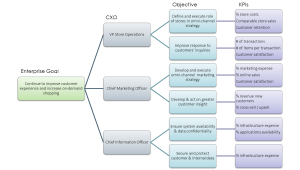Based on a recent study by Avanade*, 37% of technology spending is now controlled by departments other than IT. Not only that, the study also found that 71% of C-level executives and business unit leaders think that they can make better & faster decisions without any IT staff being involved. If you’re a technology or solution seller, you’ve probably noticed the shift of your customers’ decision making & spending on tech from IT to other lines of business or functional areas like operations, finance, or even development. So what does this shift mean for you? More than ever, it means that you need to have conversations that are relevant to your audience – the Chief Marketing Officer likely cares very little about how or where your solution is hosted, but he or she will be very interested to know it has the potential to improve marketing response rates or cross-sell / up-sell rates. On the other hand, the Chief Information Officer isn’t as concerned about marketing response rates as she or he is about where it’s hosted and how secure customer data will be. And regardless of who you’re talking to, the solution you’re selling should support the overall goals of the organization; how your individual customer within the organization views & helps to achieve that goal is another key piece of the conversation. Let’s use a generic example of a retailer who has an enterprise-wide goal of continuing to improve its customers’ experience both in-store and online while also increasing on-demand shopping (see graphic below). While each of the CXOs shown has a vested interest in the enterprise goal, they’ll approach achievement of the same goal through varying individual business objectives relevant to their job & functional role, and each will measure success in different ways with different key performance indicators (KPIs). For example, the Vice President of Store Operations will look to define & execute the role of stores in an omni-channel strategy; success will be measured through the percentage of revenue spent on store costs, comparable store sales, and customer retention rates (among others). At the same time, the Chief Marketing Officer will be developing & executing an omni-channel marketing strategy; KPIs that can be used to measure accomplishment include the percentage of revenue being spent on marketing, the percentage of sales that are online relative to total sales, and customer satisfaction. While the Chief Information Officer may not appear to be directly concerned with the customer experience, his or her area of focus within the enterprise goal is related to the security, protection of confidential customer data and ensuring system availability so that customers can get what they want when they want it, and how they want it. Attainment of those objectives can be measured with the percentage of revenue (or total IT cost) spent on infrastructure and the percentage of time that applications are available.
(click on graphic to enlarge)
Bottom line – make sure you’re doing your homework and that you not only understand what your client’s overarching goals are, but in addition to that, take a few minutes and think about how your customer might view & support those goals. Tailor your message to the audience, ask pertinent questions, be prepared for the answers, and most importantly, be able to illustrate how your solutions impact and potentially improve the things your customer will care about the most.
* Avanade, “Global Survey: What’s Creating Tension Between IT and Business Leaders?”, April 2014

